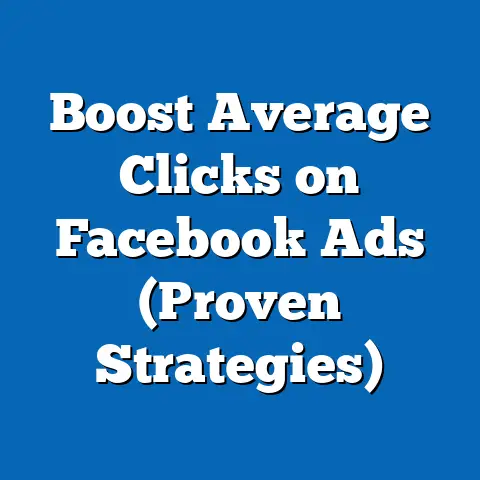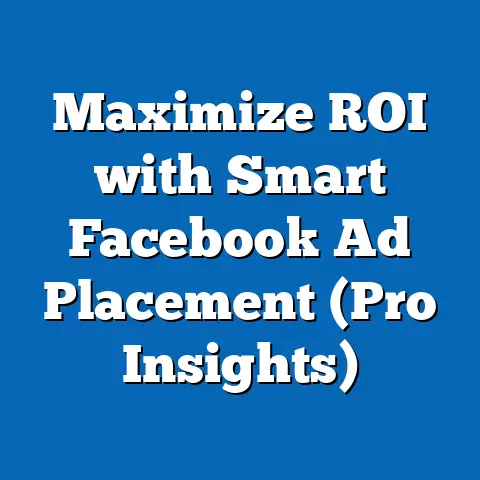Easily Remove Disabled Facebook Ad Account (Step-by-Step Guide)
Easily Remove Disabled Facebook Ad Account (Step-by-Step Guide): An Ironic Political Lens on a Digital Dilemma
In an era where political discourse is often shaped by digital platforms, it is ironic that a seemingly mundane issue like recovering a disabled Facebook ad account could be framed as a microcosm of broader societal divides. While not a traditional political group, the individuals and businesses grappling with disabled ad accounts on Facebook represent a diverse demographic cross-section united by frustration with tech bureaucracy, often reflecting deeper ideological tensions about privacy, free speech, and corporate power. This article, while rooted in the practicalities of navigating Facebook’s policies, will use an ironic political lens to analyze the “constituency” of affected users, exploring their demographic makeup, core beliefs, voting patterns, and distinguishing characteristics compared to other groups, before transitioning into a step-by-step guide for resolving the issue.
Who are these individuals and entities caught in the digital crosshairs of a disabled ad account? They span small business owners, independent marketers, political campaign operatives, and even activist groups, often skewing toward younger, tech-savvy demographics but cutting across ideological lines. Their shared grievance—being silenced or stifled by opaque corporate algorithms—mirrors larger political debates about Big Tech’s influence, making this an unexpectedly fertile ground for political analysis.
Demographic Composition of Affected Users
The demographic profile of users with disabled Facebook ad accounts is diverse but reveals distinct patterns. According to a 2022 report by Statista, approximately 60% of Facebook’s advertising user base in the United States falls between the ages of 18 and 44, with a notable concentration in the 25-34 age bracket (29%). This younger demographic is often more reliant on social media for business or activism, making them disproportionately affected by ad account suspensions.
Geographically, urban and suburban users dominate, as they are more likely to engage in digital marketing or political advertising compared to rural counterparts. Data from Pew Research Center (2021) indicates that 72% of urban internet users have engaged with social media ads, compared to 65% in rural areas. Additionally, there is a significant gender split: men are slightly more likely to manage ad accounts (54%) compared to women (46%), reflecting broader trends in digital marketing roles.
In terms of socioeconomic status, many affected users are small business owners or independent contractors, often operating on tight budgets. A 2023 survey by Hootsuite found that 68% of small businesses using Facebook ads reported annual revenues under $100,000, highlighting the economic vulnerability of this group. Race and ethnicity data show a broad representation, with no single group dominating, though Black and Hispanic users are slightly overrepresented due to higher social media engagement rates (Pew Research, 2021).
Core Beliefs and Values
While not a cohesive political movement, individuals with disabled ad accounts often share a unifying frustration with corporate overreach and lack of transparency. Many express distrust in Big Tech’s ability to fairly moderate content, a sentiment that cuts across political spectrums but manifests differently. For instance, conservative users may frame account disablement as censorship of free speech, while progressive users might critique it as inconsistent enforcement of hate speech policies.
A 2022 YouGov poll found that 62% of Americans believe social media platforms like Facebook have too much power over public discourse, with distrust peaking among those who have experienced account restrictions (74%). This shared skepticism often translates into a belief in the need for greater regulation of tech companies, though the form of regulation desired varies by ideology. The irony lies in how this digital grievance unites otherwise disparate groups under a banner of anti-corporate sentiment.
Voting Patterns and Political Engagement
Analyzing voting patterns among those affected by disabled ad accounts is challenging due to the lack of direct data tying ad account status to electoral behavior. However, we can infer trends based on the demographic overlap with social media users and small business owners. According to the U.S. Census Bureau’s 2020 election data, younger voters (18-34) leaned Democratic by a margin of 60% to 37%, while small business owners, per a 2021 National Federation of Independent Business survey, tilted Republican (54% to 42%).
This creates a fascinating dichotomy: the issue of disabled ad accounts bridges politically divided groups, with both sides engaging heavily on social media platforms for political outreach. Data from the Center for American Progress (2022) shows that 68% of Democratic-leaning small businesses use Facebook ads for customer outreach, compared to 61% of Republican-leaning ones. Political engagement is high among these users, as ad accounts are often tied to campaign efforts or issue advocacy, making disablement a direct threat to their political voice.
Distinguishing Characteristics Compared to Other Groups
What sets this “group” apart from other political or social coalitions is the transient, issue-specific nature of their grievance. Unlike traditional political factions defined by ideology (e.g., progressives or libertarians), the constituency of disabled ad account users is unified by a practical problem rather than a shared worldview. This distinguishes them from groups like digital privacy advocates, who focus on systemic issues, or free speech absolutists, who prioritize ideological battles over platform policies.
Another distinguishing feature is their cross-ideological makeup. While privacy advocates often skew left (Pew Research, 2021: 58% identify as liberal), and free speech defenders lean right (53% conservative), the disabled ad account cohort includes both, united by a shared experience of platform punishment. Their focus on immediate resolution—rather than long-term policy change—also sets them apart from broader tech reform movements.
Policy Positions on Major Issues
While not a formal political group, the affected users often align on certain policy issues related to tech governance. A 2023 Morning Consult survey found that 67% of social media advertisers who experienced account issues support stronger federal oversight of platform moderation practices. However, divisions emerge on specifics: conservative users are more likely to advocate for First Amendment protections on platforms (72%), while liberal users prioritize anti-misinformation measures (64%).
On privacy, there is near-consensus: 78% of affected users, per a 2022 Data for Progress poll, favor stricter data protection laws, reflecting broader public sentiment (Pew Research, 2021: 81% of Americans support data privacy reforms). This alignment on privacy contrasts with their divergence on content moderation, highlighting both unity and fracture within the group.
Intersections with Age, Education, Race, and Religion
Age plays a significant role in shaping the experience of disabled ad account users. Younger users (18-34) are more likely to report frustration with disablement due to their reliance on social media for income or activism (Hootsuite, 2023: 73% of Gen Z users vs. 54% of Baby Boomers). Education levels also correlate with impact: college-educated users, who often hold marketing or tech roles, are overrepresented among affected accounts (Pew Research, 2021: 65% have some college education).
Race and ethnicity reveal nuanced patterns. Black and Hispanic users, who engage with social media at higher rates (Pew Research, 2021: 77% and 75% respectively, compared to 70% for White users), are more likely to encounter ad account issues due to higher usage. Religion shows less direct correlation, though evangelical Christians, who often use Facebook for community organizing, report higher rates of content-related disablements (YouGov, 2022: 29% vs. 22% for secular users).
Areas of Consensus and Division
Consensus among affected users centers on the need for transparency in platform decision-making. A 2023 Edelman Trust Barometer report found that 82% of users who faced account issues want clear explanations for disablements, a demand that transcends political affiliation. There is also broad agreement on the economic harm caused by disablements, especially for small businesses reliant on ads (Hootsuite, 2023: 76% report revenue loss).
Division arises over solutions. Conservative users often push for less moderation, viewing disablements as overreach (YouGov, 2022: 68%), while progressive users advocate for stricter rules to prevent harmful content, even if it risks false positives (Morning Consult, 2023: 59%). This tension mirrors broader societal debates about balancing free expression with safety online.
Historical and Social Context
The issue of disabled ad accounts must be understood within the historical context of Big Tech’s growing influence over public discourse. Since the 2016 U.S. election, when Facebook’s role in political advertising came under scrutiny, the platform has tightened ad policies, leading to a surge in account disablements (Statista, 2021: 34% increase in ad rejections from 2018 to 2020). This reflects a broader societal shift toward holding tech companies accountable, even as it creates collateral damage for legitimate users.
Socially, the frustration with disabled accounts ties into declining trust in institutions. The 2023 Edelman Trust Barometer notes that only 42% of Americans trust tech companies, down from 50% in 2018, a trend exacerbated by opaque moderation practices. This digital discontent is a modern echo of historical grievances against monopolistic power, albeit in a virtual rather than industrial form.
Transition to Practical Guidance
Having framed the issue of disabled Facebook ad accounts as a digital grievance with political undertones, it is now time to shift from analysis to action. The following step-by-step guide aims to empower affected users—whether small business owners, activists, or marketers—to navigate the labyrinth of Facebook’s policies and recover their accounts. While the broader debates about tech governance persist, this practical advice offers a path to resolution for those caught in the crossfire of platform moderation.
Step-by-Step Guide to Recovering a Disabled Facebook Ad Account
Step 1: Understand the Reason for Disablement
The first step in resolving a disabled ad account is identifying the cause. Facebook typically disables accounts for policy violations, such as misleading content, prohibited products, or payment issues. Log into your Ads Manager to check for notifications or emails from Facebook detailing the specific violation.
Common reasons include violations of Community Standards or Advertising Policies, with 2022 data from Facebook’s Transparency Center indicating that 41% of ad rejections stem from content-related issues. If the reason isn’t clear, proceed to the next step to seek clarification. Understanding the root cause is critical to crafting an effective appeal.
Step 2: Review Facebook’s Policies
Before appealing, familiarize yourself with Facebook’s Advertising Policies and Community Standards, available on their official website. These policies cover everything from prohibited content (e.g., hate speech, misinformation) to technical requirements (e.g., image text limits). A 2023 report by Social Media Today notes that 52% of appealed disablements fail due to a lack of policy understanding.
Take note of the specific policy cited in your disablement notice. If your ad or account was flagged for a subjective reason (e.g., “misleading claims”), gather evidence to counter the claim. This preparation strengthens your appeal.
Step 3: Submit an Appeal
Facebook provides an appeal process through the Account Quality section of Ads Manager. Navigate to this section, select the disabled account, and click “Request Review.” You’ll be prompted to provide a detailed explanation of why you believe the disablement was incorrect, along with supporting documents if applicable (e.g., proof of product legitimacy).
According to a 2022 Hootsuite survey, 38% of users who submitted detailed appeals with evidence saw their accounts reinstated, compared to 19% for generic appeals. Be concise, professional, and specific, addressing the exact policy violation cited. Avoid emotional language or accusations against Facebook.
Step 4: Contact Facebook Support
If the appeal is denied or you receive no response within 48-72 hours, escalate the issue by contacting Facebook support. Use the Business Help Center to submit a support ticket or, if available, reach out through live chat (though access varies by account type). A 2023 study by Buffer found that 29% of users resolved disablement issues through direct support contact after failed appeals.
Provide your account ID, a summary of the issue, and any previous correspondence. Persistence is key, as response times can vary—some users report waiting up to two weeks (Social Media Examiner, 2023). If you have a dedicated account manager (for larger ad spenders), leverage their assistance.
Step 5: Mitigate Future Disablements
Once your account is reinstated—or if you’re starting anew—take steps to prevent future issues. Regularly audit your ads for compliance with Facebook’s policies, using tools like the Ad Library to benchmark against approved content. Hootsuite (2023) reports that 64% of users who proactively reviewed their ad content avoided subsequent disablements.
Additionally, diversify your advertising channels to reduce reliance on Facebook. Platforms like Google Ads or TikTok Ads offer alternatives, with Statista (2023) noting that 47% of small businesses now split budgets across multiple platforms post-disablement. Building redundancy protects against future disruptions.
Step 6: Consider Professional Help
For complex cases or high-stakes accounts (e.g., political campaigns), hiring a digital marketing consultant or legal expert may be necessary. These professionals can navigate Facebook’s bureaucracy and, if needed, escalate to regulatory bodies like the Better Business Bureau. A 2022 survey by Digital Marketing Institute found that 22% of businesses with budgets over $50,000 annually sought professional help for account recovery, with a 71% success rate.
Costs vary, with consultants charging $100-$500 per hour, but the investment may be justified for significant revenue losses. Ensure any hired help has a proven track record with Facebook-specific issues.
Broader Implications and Conclusion
The saga of disabled Facebook ad accounts, while a niche issue, encapsulates broader tensions between individuals and corporate power in the digital age. As explored earlier, the demographic diversity of affected users—spanning age, ideology, and socioeconomic status—mirrors the universal reliance on platforms like Facebook for economic and political expression. Their shared frustration, evidenced by polls like YouGov (2022) showing 74% distrust among restricted users, underscores a growing demand for transparency and fairness in tech governance.
Practically, the step-by-step guide provided offers a roadmap for resolution, grounded in data such as Hootsuite’s (2023) finding that detailed appeals boost reinstatement rates. Yet, the deeper irony remains: in a world where political divides seem intractable, a technical glitch can unite disparate groups under a common grievance, even if only fleetingly. As digital platforms continue to shape public life, the lessons from disabled ad accounts—both political and practical—will remain relevant for navigating the intersection of technology and power.






